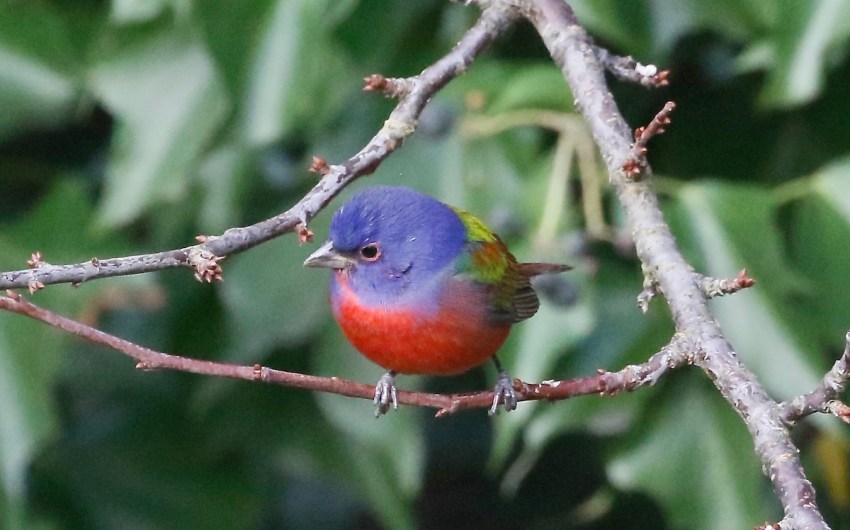Adorable Rodents on the Highveld Beat
Giant Kangaroo Rats Are the Eco-Gardeners of California’s Grasslands

The beat was subtle and steady, about 10 to 20 rapid drums for up to 20 seconds. Giant kangaroo rats (GKR) — Dipodomys ingens— were communicating with each other by drumming their long, narrow feet on the warm, gravelly loam in the southern fringe of the San Joaquin Valley.
As I quietly listened from within my tent, their incessant drumroll carried across the Carrizo Plain National Monument, the last and best bastion for this keystone species.
One of the smallest mammals on the last of California’s semi-arid grasslands is also its most important, the eco-engineer of 250,000 acres of sweeping plain and rolling mountain ranges — the Calientes and Temblors. Yet, when observing one of these endangered rodents, it is a bit of a head-scratcher how something so tiny can deliver such a heavy environmental impact, everywhere from its vast subterranean dwellings to the thermal updrafts in the blue skies above. Still, GKRs are the largest of more than 20 species of kangaroo rats and are endemic to California. They’ve been on the Endangered Species List since 1987, due to the loss of 98 percent of its habitat and the use of rodenticides.
Not including their long tail, GKRs are just under six inches long and weigh four ounces on average. Their lifespan is just two to four years. They possess large, almond-shaped eyes, and elongated tufted tails that are seven inches long. Their kangaroo-like feet enable them to jump nine feet to escape predators. They are simultaneously cute and slightly strange in appearance. However, looks aren’t everything. Several biologists in various fields of expertise have told me, “As the Giant Kangaroo Rat goes, so goes the Carrizo Plain.”
Providers
Wandering across the expanse of the Carrizo Plain reveals an expanse of broad mounds, burrows, and tunnels, many of which are the work of GKRs. Their abandoned burrows become the homes of an array of other grassland fauna. American badgers, San Joaquin kit foxes, burrowing owls, long-tailed weasels, antelope ground squirrels, and blunt-nosed leopard lizards claim the old burrows as their own, modifying the underground dwellings for their new homes.
Their burrows are also mere pit stops. The Carrizo Plain is one of the sunniest and hottest regions of California, so GKR burrows are convenient places for wildlife to seek refuge during the heat of the day. Their dwellings are also ideal for species escaping predators.

On the flipside, GKRs are also a much-wanted food source for some of the predators mentioned above, but also western Pacific rattlesnakes, gopher snakes, coyotes, ravens, hawks, and falcons. Their remains are often found on old ranch posts and signposts, branches, and on the floor of historic ranch buildings. It appears the one part of GKRs that predators do not desire is their long, tough, leathery tails.
Grassland Rototillers
When observing the burrows of GKRs, it’s clear these grassland gardeners work in big, broad circles, mowing down the grasses surrounding their burrows. Grasses are gathered and transported underground, used for bedding and food for the winter months ahead. All that mowing around their burrows also encourages good browsing for tule elk and pronghorn antelope on the Carrizo Plain.
One other significant physical characteristic of GKRs are their saggy cheek pouches for storing seeds. After the seeds are dried, they are transported underground and stored in their cool burrows, where they eventually swell with moisture. Giant kangaroo rats can go their whole lives without drinking a sip of water.
How do biologists monitor GKR populations across the Carrizo Plain? It’s partly on the ground. Trapping within population grids occurs during mid-summer, but a lot of data is gathered from satellite imagery. Those large circles mowed around their burrows are counted from above, giving biologists data on population densities.
As drumming continued into late evening, it finally lulled me to sleep. After exiting my tent early the next morning, I found out just how busy a couple of GKRs were. Their prints were evident around the vestibule of my tent, and the grass was mowed. The eco-gardeners of the highveld never rest.
Premier Events
Sun, Dec 22
11:00 AM
Santa Barbara
Mosaic Makers Market – Holiday Market Finale
Wed, Dec 25
6:00 PM
Santa Barbara
FREE Contra Dance X-mas Day💃Corwin & Grace band6-9
Sun, Dec 22
11:00 AM
Santa Barbara
Mosaic Makers Market – Holiday Market Finale
Sun, Dec 22
2:00 PM
Santa Barbara
Santa Paws Holiday Party – A Howliday Celebration
Tue, Dec 24
2:00 PM
Santa Barbara
Brass Bear Christmas Eve Buffet
Tue, Dec 24
5:00 PM
Santa Barbara
Christmas Eve at the USSB
Wed, Dec 25
5:30 PM
Santa Barbara
Christmas Dinner at El Encanto
Fri, Dec 27
6:00 PM
Solvang
New Year Disco Ball Paint & Sip
Fri, Dec 27
9:00 PM
Santa Barbara
Film Screening: “Indiana Jones and The Last Crusade”
Sat, Dec 28
7:00 PM
Lompoc
Rosie Flores & Grey DeLisle + Special Guests LIVE
Sat, Dec 28
7:00 PM
Carpinteria
Family Comedy Night at The Alcazar
Sat, Dec 28
7:00 PM
Santa Barbara
The Temptations at Casa De La Raza
Sun, Dec 22 11:00 AM
Santa Barbara
Mosaic Makers Market – Holiday Market Finale
Wed, Dec 25 6:00 PM
Santa Barbara
FREE Contra Dance X-mas Day💃Corwin & Grace band6-9
Sun, Dec 22 11:00 AM
Santa Barbara
Mosaic Makers Market – Holiday Market Finale
Sun, Dec 22 2:00 PM
Santa Barbara
Santa Paws Holiday Party – A Howliday Celebration
Tue, Dec 24 2:00 PM
Santa Barbara
Brass Bear Christmas Eve Buffet
Tue, Dec 24 5:00 PM
Santa Barbara
Christmas Eve at the USSB
Wed, Dec 25 5:30 PM
Santa Barbara
Christmas Dinner at El Encanto
Fri, Dec 27 6:00 PM
Solvang
New Year Disco Ball Paint & Sip
Fri, Dec 27 9:00 PM
Santa Barbara
Film Screening: “Indiana Jones and The Last Crusade”
Sat, Dec 28 7:00 PM
Lompoc
Rosie Flores & Grey DeLisle + Special Guests LIVE
Sat, Dec 28 7:00 PM
Carpinteria
Family Comedy Night at The Alcazar
Sat, Dec 28 7:00 PM
Santa Barbara

























You must be logged in to post a comment.